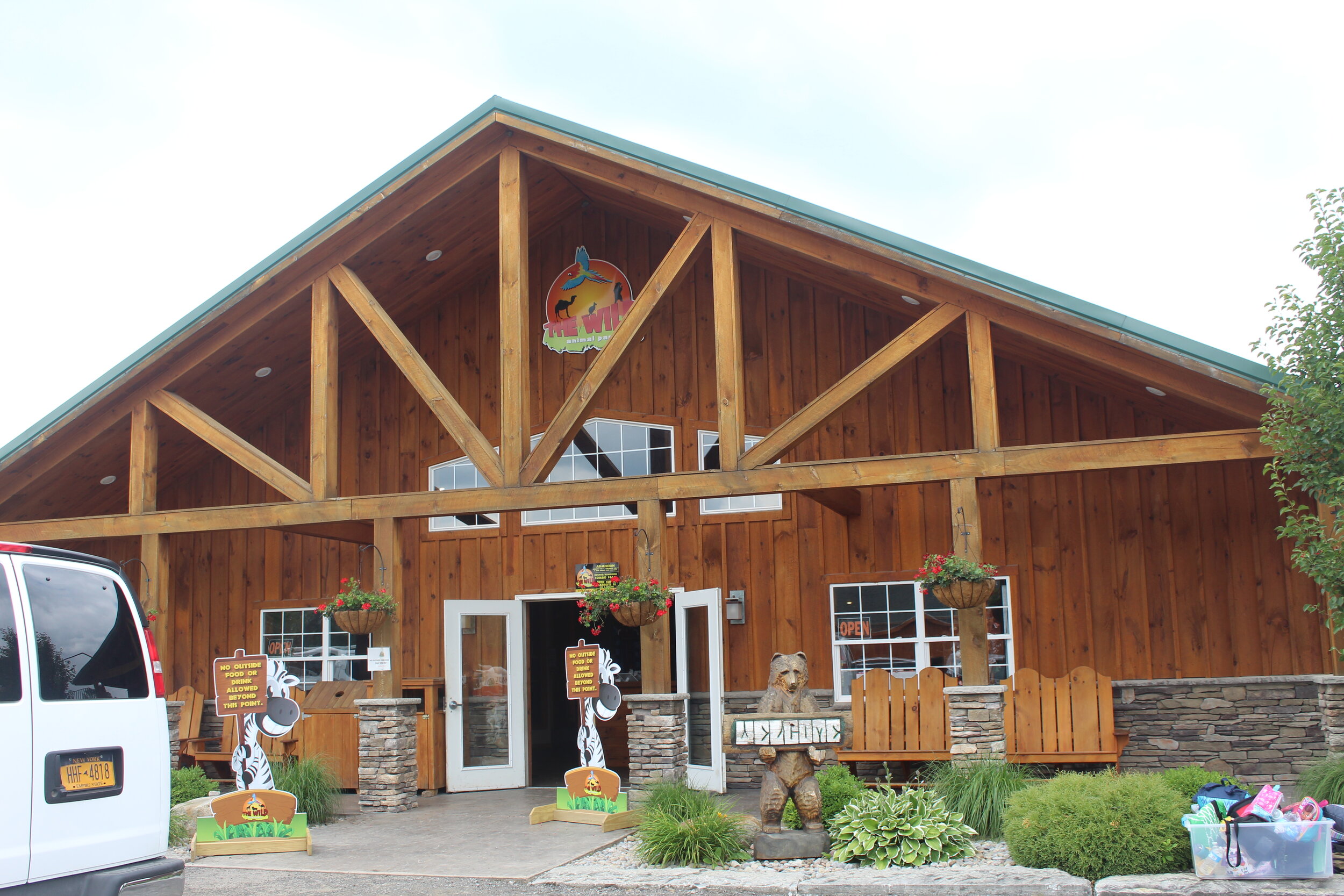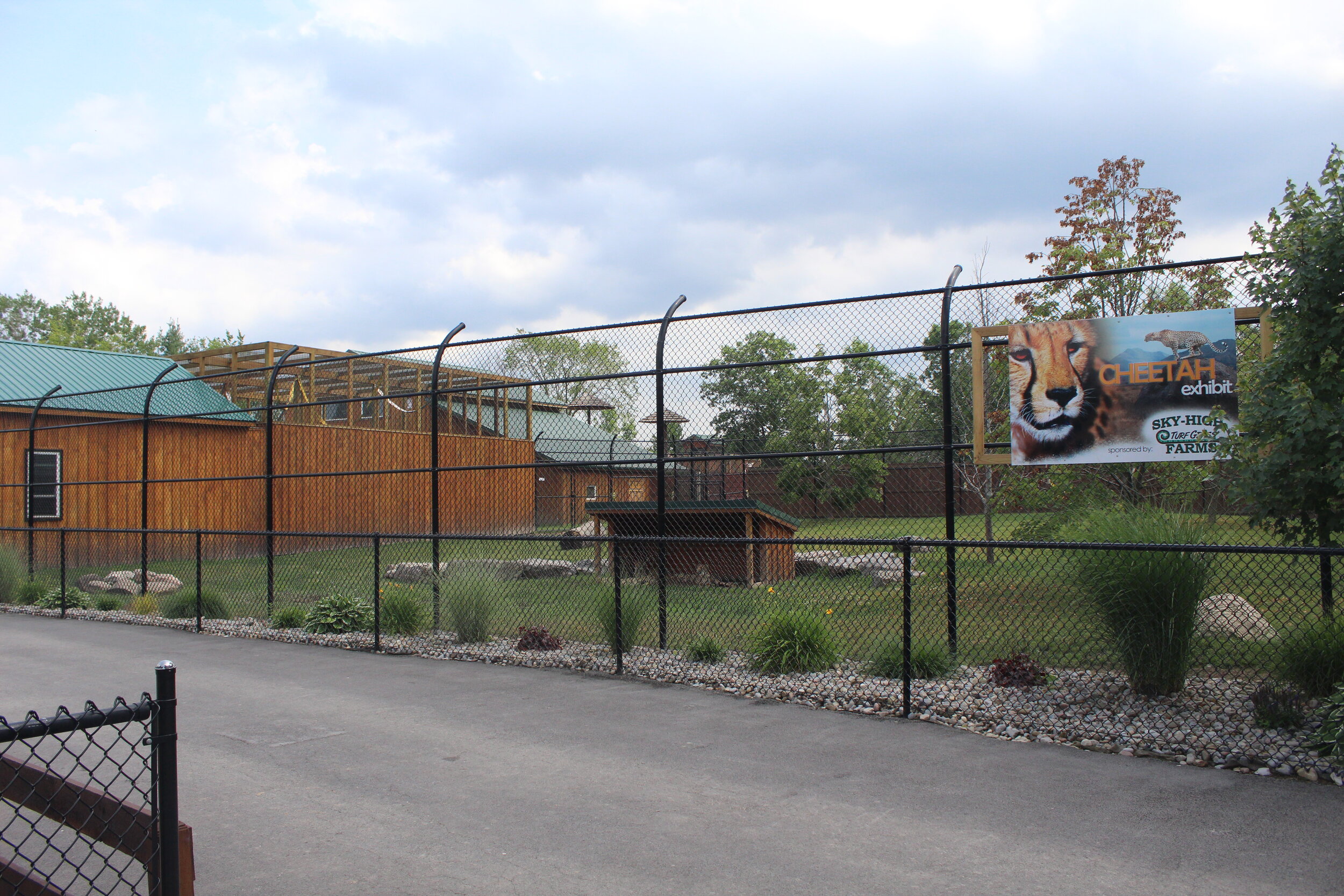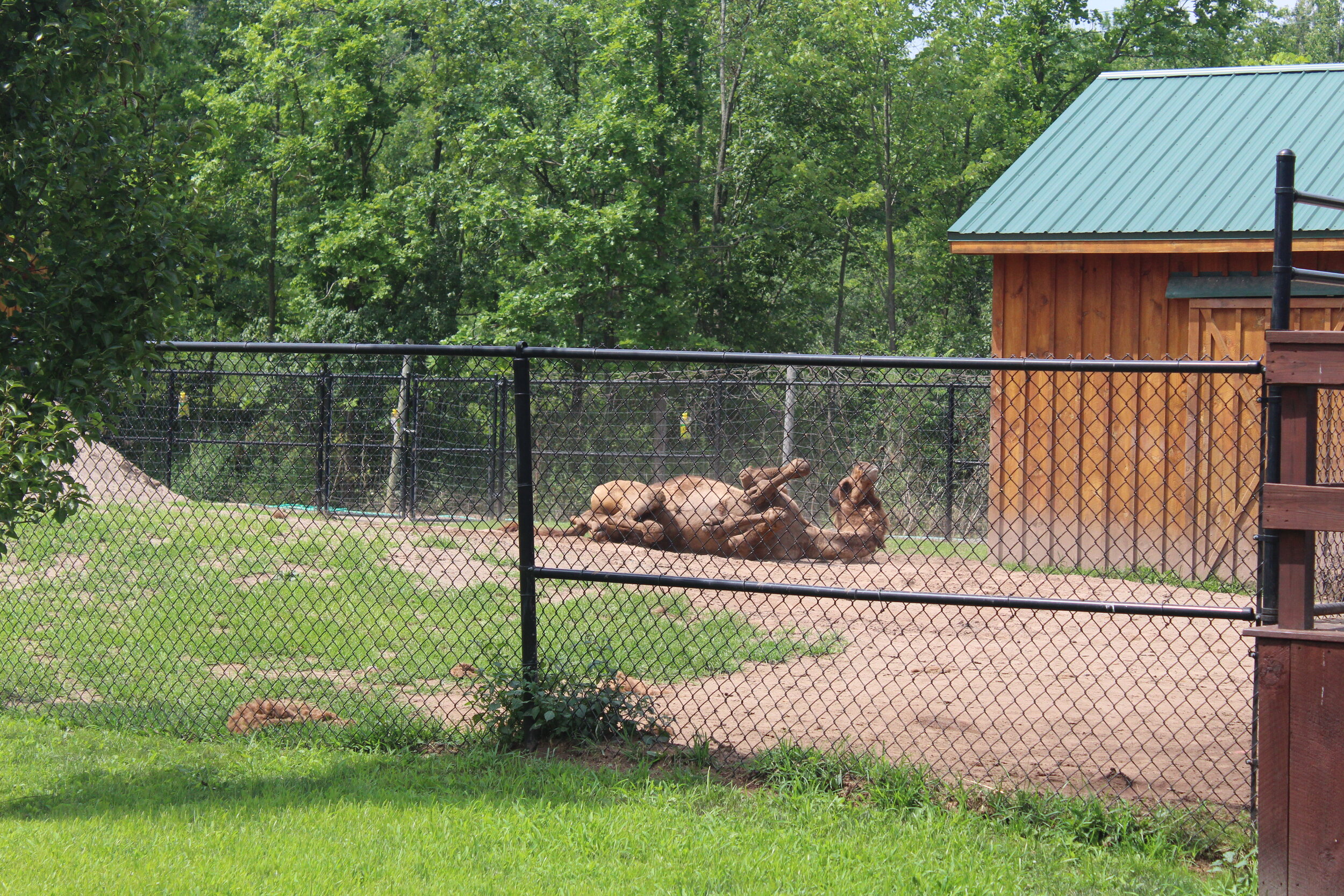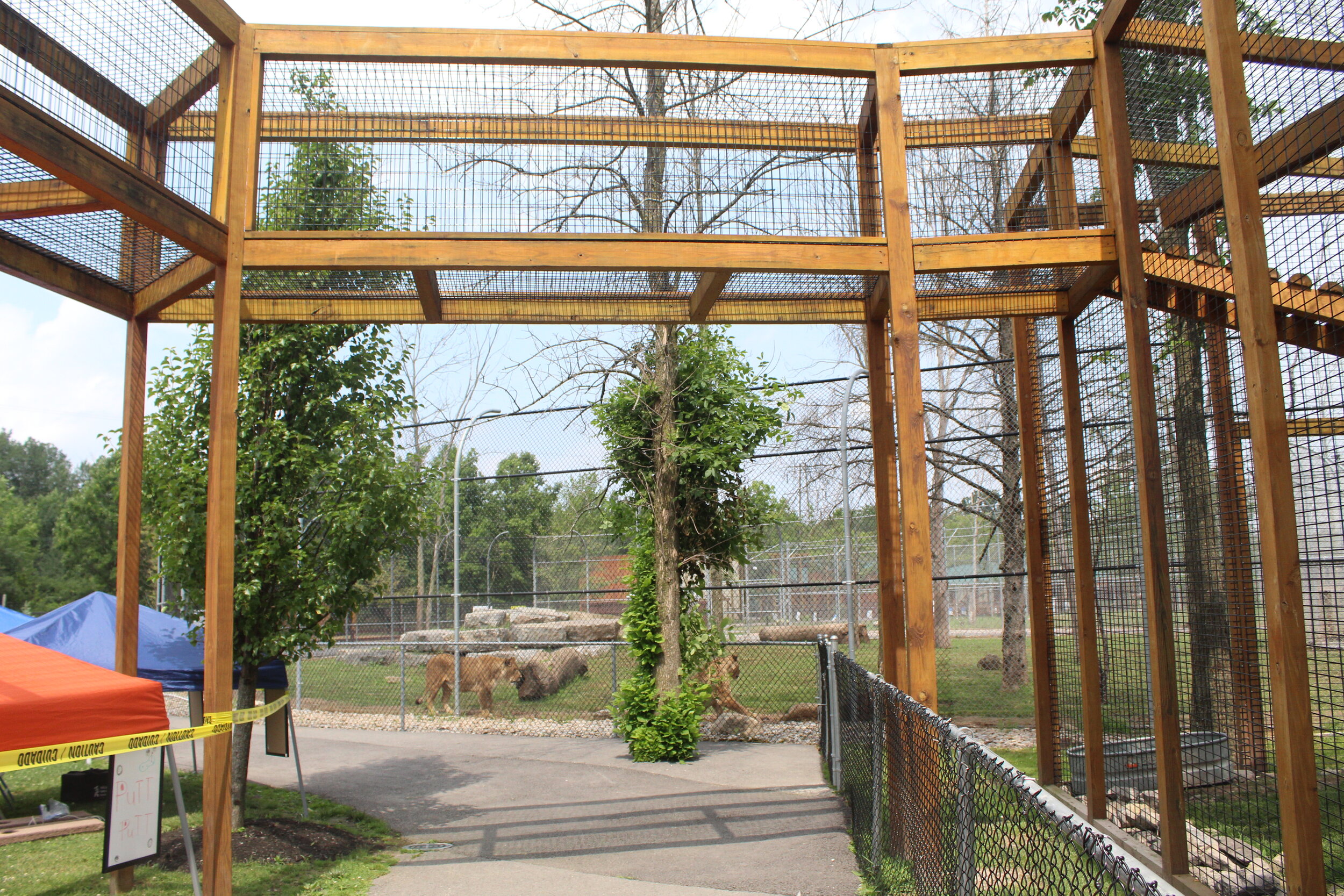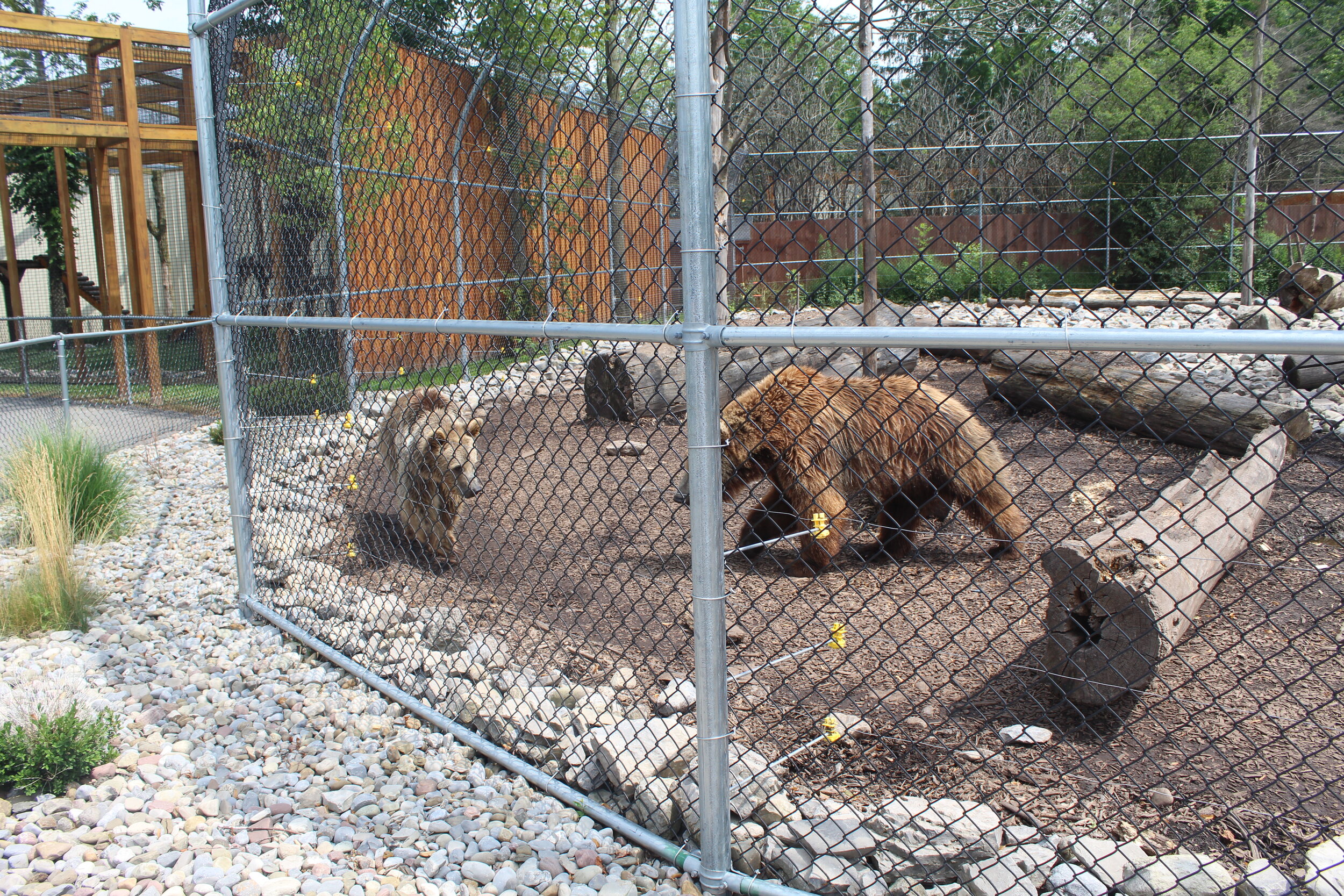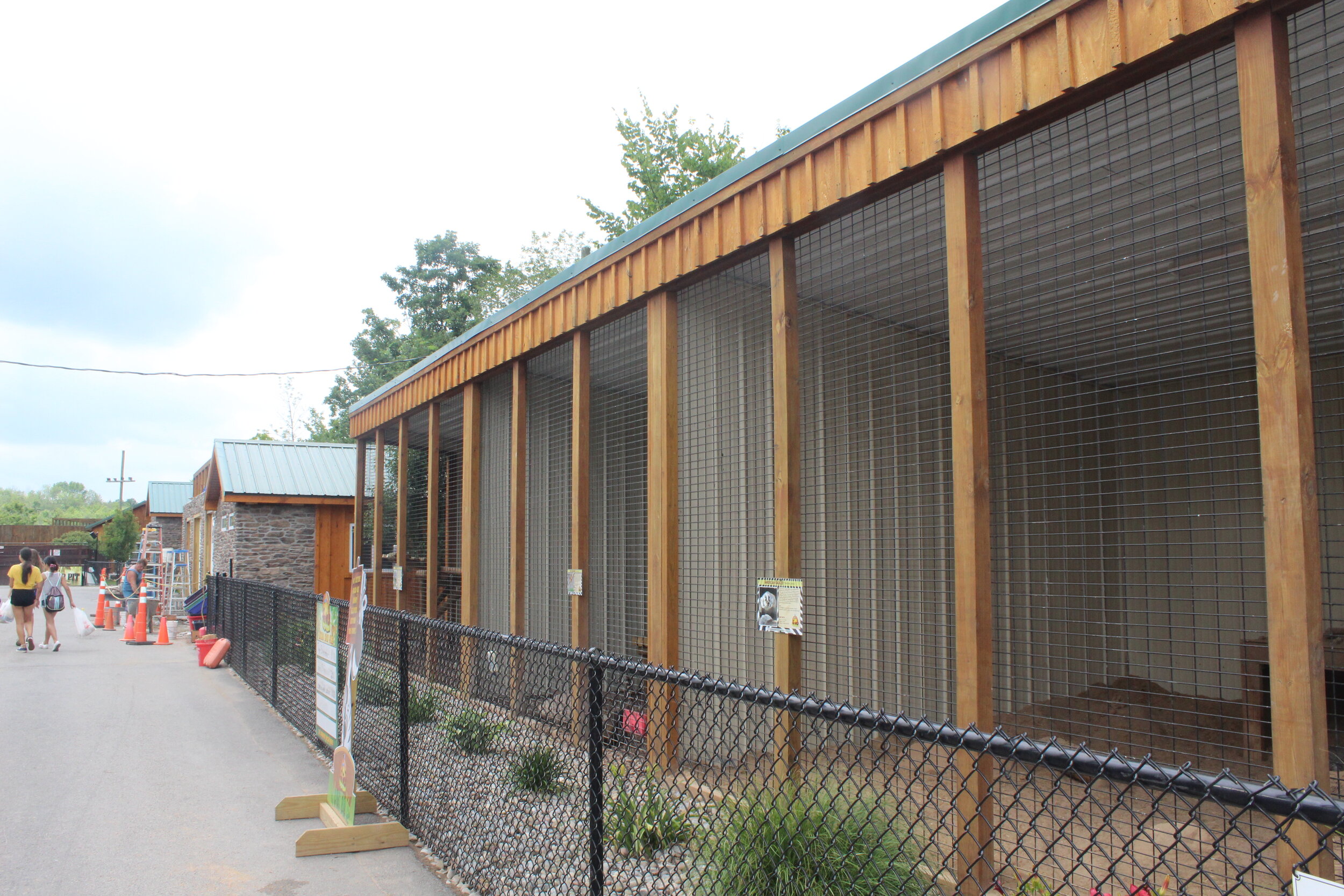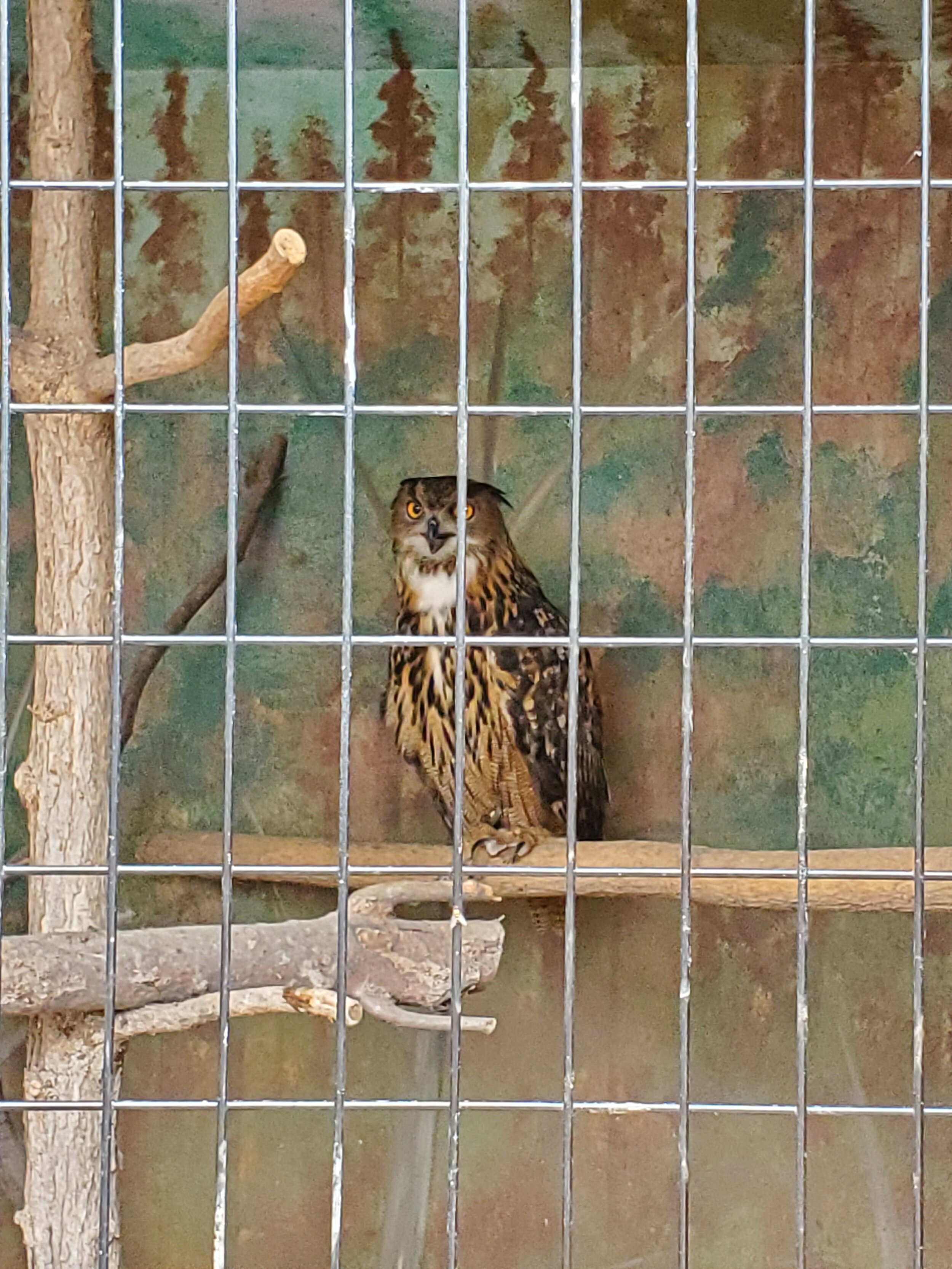CASE STUDY: THE WILD ANIMAL PARK
You want jaguars? We got em. You want snow leopards? We got em. You want grizzly bears, lions, cheetahs, alligators, and binturong? We got all of those and more! Just come on down to the The Wild, and we’ll make sure you get what you’re looking for—and you’ll have a great time doing it!
That’s what was going through my head as I traversed the 14-acre, pristine non-accredited The Wild in the rural flatlands of central New York.
Don’t get me wrong—I really liked this small zoo! And I couldn’t help but be reminded of the fresh, clean, tidy, perfection and clarity of a retail brand. The design is simple and consistent with a modern ‘rustic cabin’ motif: metal roofs, cedar plank buildings and fencing, heavy timber and mesh enclosure barriers, and metal buildings when needed. Wayfinding is a breeze with just one pathway loop around the park. Food and beverage is placed halfway through your journey—alongside a play area overlooking both a grizzly exhibit and a gaur habitat (which was essentially a lake). The gift shop was crisp and efficient, offering a tight selection of best-selling merchandise—mostly plush (I was sad to not find a single branded coffee mug!)—with the entry building / gift shop walls lined with small exhibits for sloth (who don’t go too far so don’t need a lot of space), snakes, and small primates.
Like many small facilities, guests can buy cups of feed for the animals at the front door. Here, feeding is limited to various domestics (goats, calves, young camels, sheep) and other hoofstock including fallow deer and zebra. Giraffe feeding is available, but is under the watch of a staff member. Zebra are fed through chutes, which does encourage some begging, but with two chutes, there is at least an element of enrichment to it—causing the zebra to keep eye on both chutes. There’s no hope for the fallow deer who are just like goats—they scream at you, they manipulate you with those big ole doe eyes, and they absolutely clobber each other for feed from your hand. Pro Tip: I discovered a much better course with these guys is to toss the pellets in a scatter feed through the fence causing the mob to dissipate and requiring them to work, just a little, for their freebies.
The Wild, being brand spanking new (less than 10 years from what I can discern), and privately-owned, is the vision of a single owner. This explains the clear vision and efficiency of design. While the zoo has many clever elements (such as the mountain lion support space’s roof serving as a convenient overlook for the cats, the fun overhead jaguar trail, and the placement of the goats to maximize interaction time), the chain-retail feeling of the place came to me because of this efficiency—exhibits are squeezed one after the other onto the site in an effort to place as many on-site as possible. For me, the spaces between exhibits are often as important in setting the tone for the visit as the exhibits themselves are. They provide vegetative buffer, a sense of nature, quiet decompression space from exhibit to exhibit, and oftentimes, simply provide visual blocks between habitats. Here, in some instances, fences or metal walls are intentionally placed to block views into adjacent habitats instead of soft vegetation. Unfortunately, in other cases (like near the carnivores), views for guests are a sea of chain link. I’m a huge proponent of layered views for guests and animals alike, but in this case, it is unsuccessful. Several opportunities for animal enrichment with vistas were missed, especially for the mountain lion with its full walls that could’ve provided views to the adjacent natural area.
Other simple things again reinforced the comparison of The Wild to a Cabelas or Bass Pro shop. The water features are fairly basic with little attempt to naturalize them. They sometimes look like someone just poured concrete in a hole and called it a pond. The hyena habitat illustrates this well, with unappealing rockwork in addition to the pool. What’s more, music blasted throughout the zoo on speakers mounted on exhibits. I was watching a jaguar cooling off in the shade with Taylor Swift Shaking It Off around me, and I was listening to, I think, the Broadway Lion King soundtrack as I laughed at camels rolling around in the sand. There was no buffer between the big cats and the inflatables zone, and throughout, the exhibit sponsors’ banners were draped like the signs along the fence at a baseball game—or like sale banners, in keeping with the retail theme.
Grizzly habitat
Most of the habitats were wide open to visitors’ eyes, with no composition of views or intentional viewing areas, and very few opportunities for animals to choose visual escape. This was especially apparent with the large grizzly habitat that was 200 degrees of viewing through chain link, allowing guests to clearly pick up on the young bears’ pacing. Additionally, although the habitats generally are large, most are lacking any change in topography. I think adding some hills would do wonders for the animals for challenging locomotion as well as providing some visual breaks. A basic tenet of zoo design is to not give away the entire habitat to the visitor—meaning, guests shouldn’t be able to stand at one point and be able to estimate the exact size of the enclosure. Some adjustment with this in mind would do wonders for this little zoo.
Overall, The Wild Animal Park is a lovely one-hour stop if you are on your way through New York. The turn-in off the road was a little strange as it felt like the owner’s front yard, but just beyond that, the entry building welcomes you to a park with a lot of heart and good intentions. The on-going improvements at the zoo will only increase the appeal as they continue to learn and grow.

